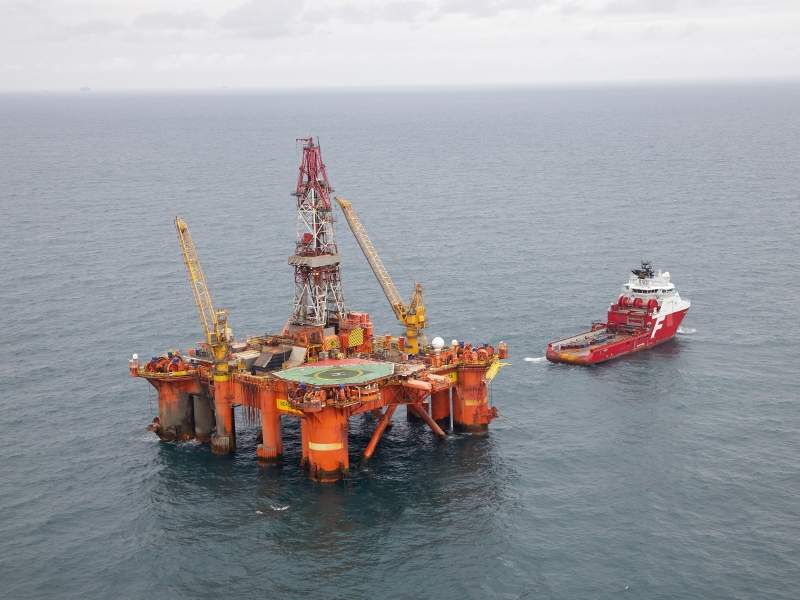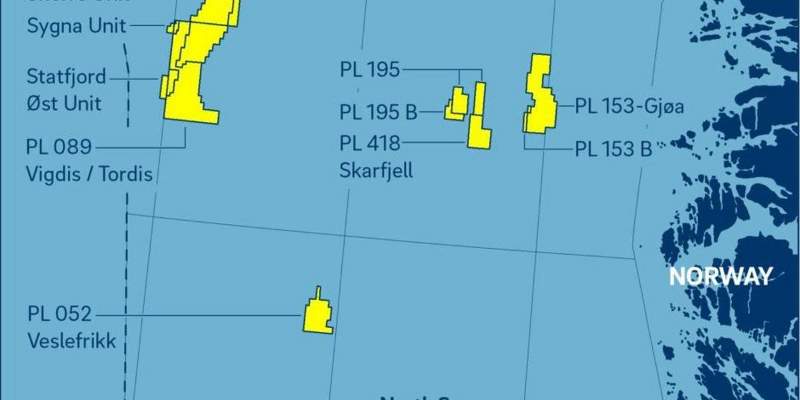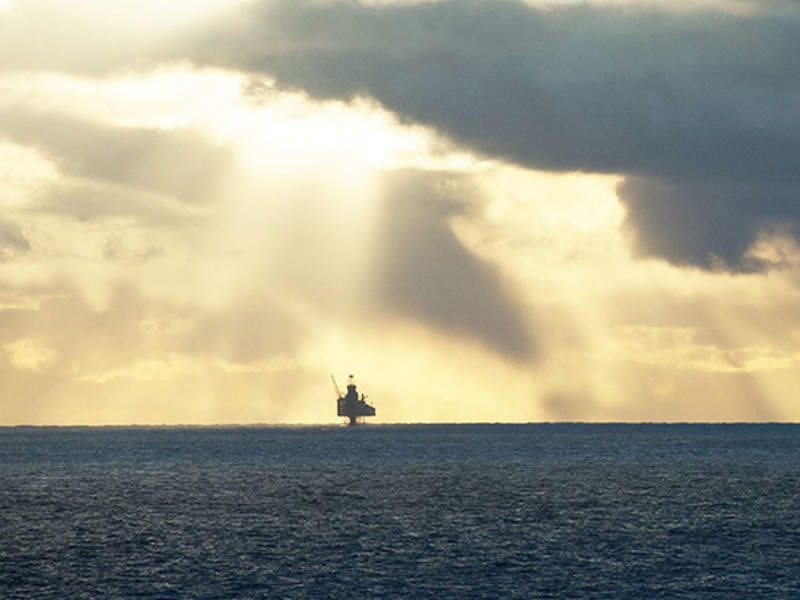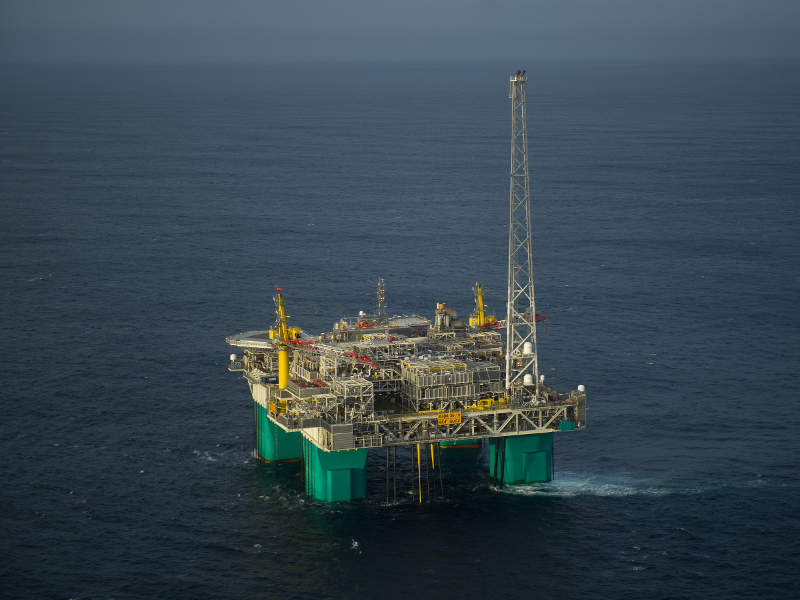The Nova (formerly Skarfjell) field is located in the production licences PL 418 in the north-eastern part of the Norwegian North Sea. The field lies in the so-called Quadrant 35, approximately 20km southwest of the Gjøa platform and 120km north-west of Bergen, in water depth of approximately 370m.
The Nova field principally lies in PL 418, with a part of the field extending towards the south into PL 378.
The field is operated by Wintershall Norge, who own a 35% share of PL 418, the other partners in the licence, include Cairn Energy subsidiary Capricorn Norge (20%), Spirit Energy (20%), Edison Norge (15%) and DEA Norge (10%).
Wintershall and its partners proposed a development solution for the Nova field in February 2017, and the plan for development and operation (PDO) for the Nova field was submitted to the Ministry of Petroleum and Energy in May 2018.
The production from the Nova oil field is expected to commence by September 2021.
Nova field discovery
The Nova oil field was discovered in March 2012 through the drilling of the 35 / 9-7 wildcat well by the Songa Delta rig to a vertical depth of 2,976m.
Limitation in the rig slot length did not allow for testing of the well. Instead, reservoir and fluid sampling were performed, which provided extensive and adequate data on the field.
Geology and reserves of the Nova field
The discovery well encountered good-quality light oil and a significant oil column in Upper Jurassic sandstones.
The recoverable reserves of the Nova field are estimated to be approximately 80 million barrels of oil equivalent (Mmboe).
Appraisal of drilling at Nova field
Skarfjell’s hydrocarbon potential has been appraised with the drilling of two wells by the Transocean Arctic rig, known as 35 / 9-8 and 35 / 9-10S.
Well 35 / 9-8 was drilled in April 2013, approximately 1.8km north of the well site to delineate the discovery. It was drilled to a vertical depth of 3,232m and encountered a 64m-thick oil column in the Heather formation.
A maximum production rate of 300 standard cubic metres (Sm³) of oil and 53,400Sm³ of gas flow per day was achieved from a 13m interval in the reservoir during a formation test on the well.
The second appraisal well was drilled in January 2014, roughly 2km south-east of the discovery. It included a main bore (35 / 9-10S) drilled to a depth of 2,837m, and a sidetrack (35 / 9-10A) drilled to a depth of 2,835m.
The purpose of drilling the second well was to determine the thickness, fluid content, geological properties and extent of the Skarfjell reservoir. The well encountered hydrocarbons in the upper and lower Intra-Heather sandstones and confirmed the southern extension of the field. It also confirmed the presence of a gas cap.
Wintershall ended the appraisal campaign for Skarfjell with the southern well, which confirmed the economic feasibility of the project and also reduced uncertainties in the reservoir quality distribution.
Nova field development
Nova is planned to be developed as a subsea tie-back to the Gjøa platform. The development plan includes two subsea templates connected to the Gjøa platform via pipelines where oil and gas from the Nova field will be processed and exported.
The two subsea templates will have three production wells and three water injection wells, with additional space for another subsea template with four wells for future development.
A new 1,000t topside module will be installed on the Gjøa platform at a cost of Nkr2bn ($248m) to handle Nova production. An umbilical and riser will also be installed to provide gas lift and water injection for extracting the hydrocarbons.
The Nova field development will also include two pipes in pipe flowlines, riser base structures, a water injection pipeline and a gas lift pipeline.
Several different development solutions were explored through technical and commercial investigations, and tie-back to the Gjøa platform was ultimately considered the most economical solution. The West Mira drilling rig will drill six subsea wells on the Nova field (formerly Skarfjell). The drilling operations are anticipated to begin in the first half of 2020.
Gjøa processing facility details
Gjøa is a floating semi-submersible facility equipped with processing and export equipment. It has a production and export capacity of 87,000 barrels of oil and 17 million cubic metres of gas a day.
The platform is the first floating unit to be supplied with power from land, which it receives through a 100km-long submarine cable from the Mongstad refinery.
Contractors involved
Aker Solutions was awarded a contract to provide subsea production system (SPS) for the Nova field. The scope of the contract includes engineering, procurement and construction (EPC) works of SPS, and delivery of integrated service umbilical and subsea control system.
Subsea 7 was awarded a contract for the pipeline and subsea construction (PSC) of the Norwegian field. The scope of the contract covers designing, procurement and installation of four pipelines linking the Nova field to the Gjøa platform.
Seadrill Norway Operations was awarded a contract to provide the West Mira drilling rig for drilling the subsea wells at the Nova field.











